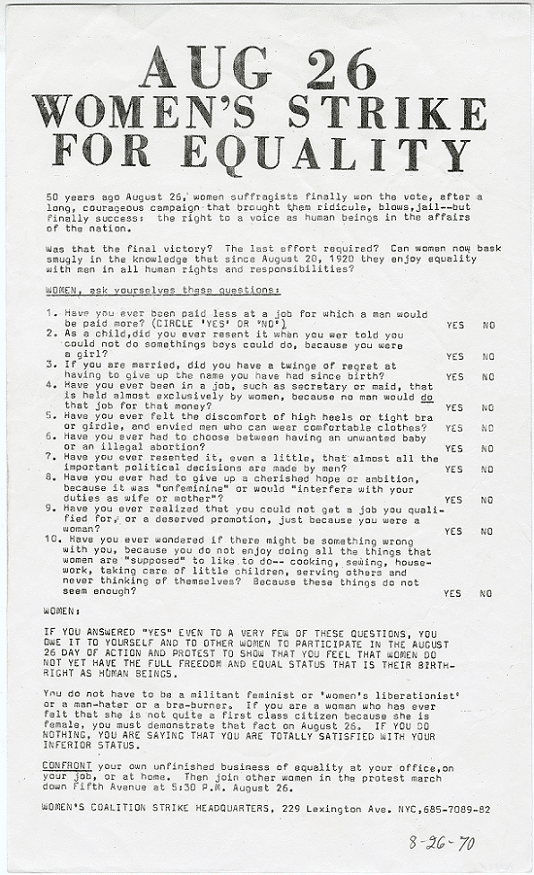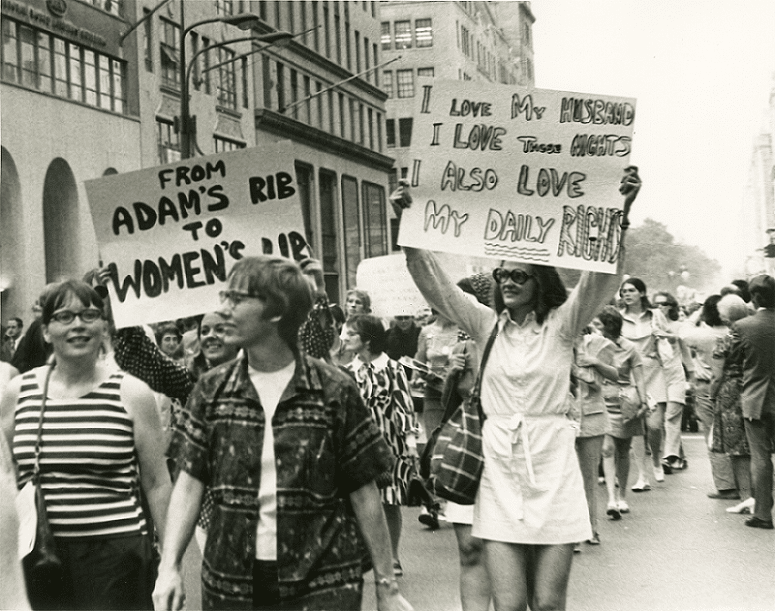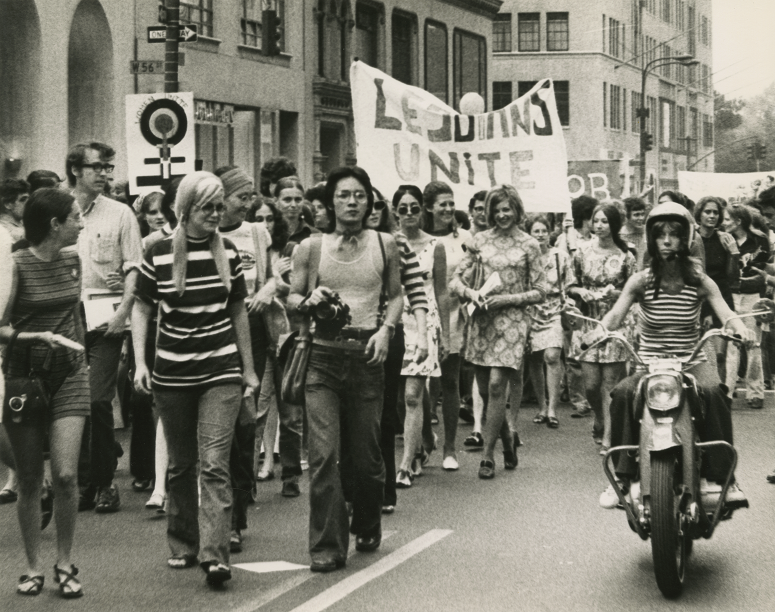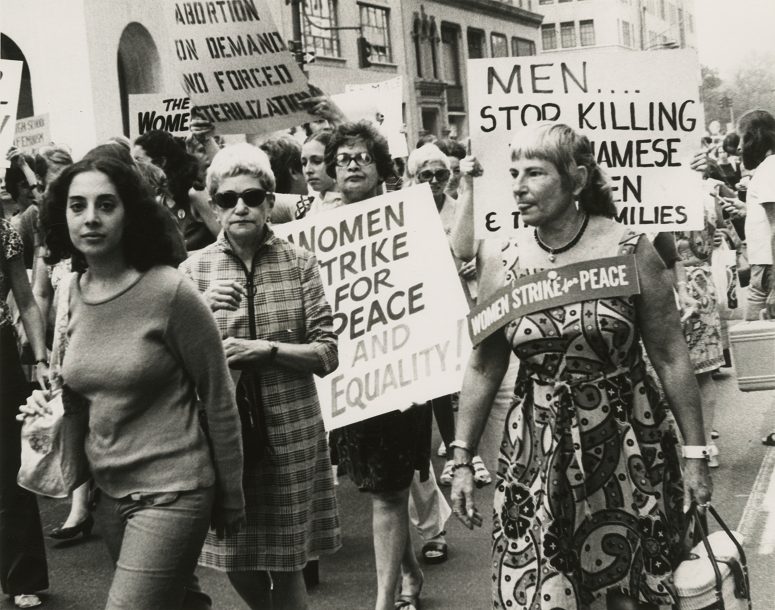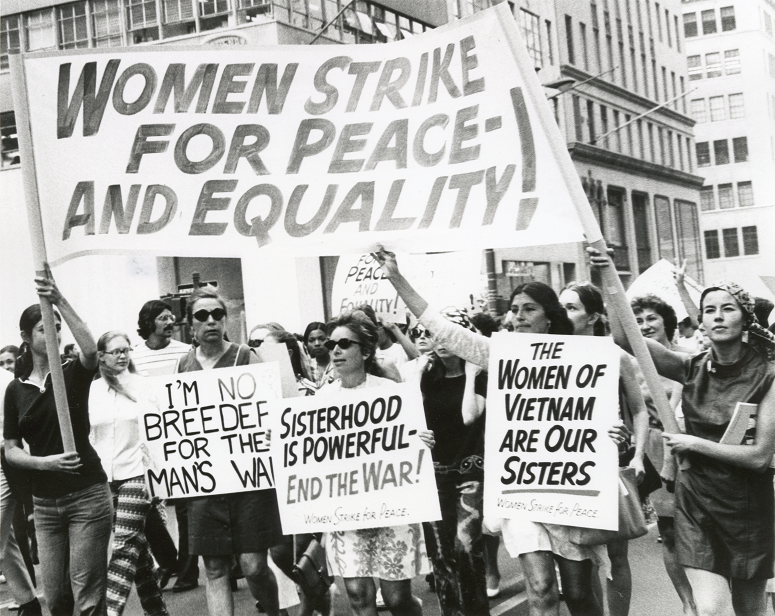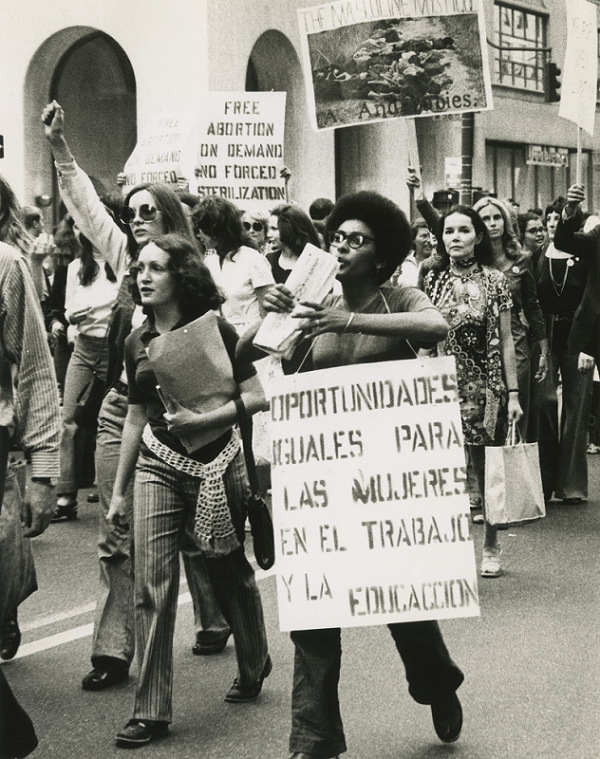Background
On August 26, 1970, the women of America went on strike. The National Organization for Women (NOW) organized the nationwide event in honor of the 50th anniversary of the ratification of the Nineteenth Amendment. The group invited women from across a range of activist organizations to overlook their differences and unite for womankind.
The strike took different forms across the country. A Louisiana newspaper replaced pictures of brides with pictures of grooms in the day’s wedding announcements. Male preachers in Massachusetts invited women preachers to make the day’s sermons. Housewives across the country refused to clean, cook, or take care of the children for the day.
The largest event was a march down Fifth Avenue in New York City. Witnesses estimate over 50,000 women participated—a number far greater than any of the largest suffrage marches. The diversity of the crowd astounded even the NOW organizers. Young and old women; housewives and single women; mothers and daughters; and even men in support of women joined the march. The marches also represented a range of political groups and perspectives. Radical feminists, lesbians, Black Power advocates, pacifists, and many more held signs and marched on behalf of women.
Betty Friedan, who originally conceived of the strike, led the march. The city government only provided a permit for the march to use one lane of traffic. The turnout was so great that Betty told the marches to use the full width of Fifth Avenue. The police officers on duty were powerless to stop the wave of marchers. The event was considered a huge success. National media coverage was extensive, and NOW’s membership increased by 50% within a few months.
About the Image
This is a collection of photographs of the New York City Women’s Strike for Equality march. The images provide a snapshot of the diversity of women who participated in the event.
Organizers of the march distributed the flyer, or broadside, to recruit participants to the march.
Vocabulary
- broadside: A single-sided printed piece of paper; often used as a flyer or poster.
- National Organization for Women (NOW): A national organization dedicated to advocating for women and gender equality.
- strike: Refusing to work in order to draw attention to an issue or request.
Discussion Questions
- Read through the broadside. What is the purpose of the march? Who should participate?
- View all of the photographs. What stands out to you most about these images?
- What do some of the signs in the photographs say? What does this tell you about the kinds of women who participated in the march?
- Why do you think the organizers decided to frame the event as a strike? What does that say about how women’s work was valued in 1970?
Suggested Activities
- APUSH Connection: 8.11: The Civil Rights Movement Expands
- AP Government Connection: 4.2: Political Socialization
- The strike was scheduled to coincide with the 50th anniversary of the 19th Amendment and commemorate the hard work of women suffragists. Connect this resource to the materials about suffrage.
- Only a few months before this march, Gloria Steinem testified before the Senate about the Equal Rights Amendment and defined the women’s liberation movement for a wide audience. Connect this resource to her testimony and invite students to consider the state of feminism at the very start of the 1970s.
- Deepen students’ knowledge of NOW and the early years of the women’s liberation movement by pairing this resource with the life story of NOW’s first president, Betty Friedan.
- Compare this broadside to a pro-suffrage broadside. How are these two resources similar or different? How does this comparison help students think about the long fight for women’s equality and citizenship in the 20th century?
- Use the photographs as a jumping off point to explore some of the issues represented in the marchers’ signs. Explore the life story of Angela Davis, the debate over abortion rights, the Vietnam peace movement, and more.
Themes
AMERICAN IDENTITY AND CITIZENSHIP; ACTIVISM AND SOCIAL CHANGE


